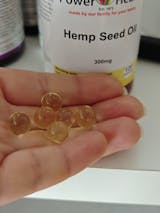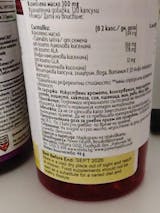- Why Vitamin C is Key for Winter Immunity
- Optimal vitamin C dosages according to age
- Recommended doses for children
- Dosages for adults
- Vitamin C collection for winter protection
- How to determine your individual vitamin C needs
- Factors influencing vitamin needs
- Symptoms of deficiency
- Digestibility and optimal time of intake
- Overdose risks and side effects
- Frequently Asked Questions About Winter Use of Vitamin C
Why Vitamin C is Key for Winter Immunity
Ascorbic acid, popularly known as vitamin C, is a water-soluble micronutrient with exceptional biological significance for maintaining optimal immune function. During the winter months, the body faces numerous challenges - reduced sunlight, cold temperatures and an increased incidence of respiratory infections. These factors create the need for a precise balance of vitamin intake to maintain adequate immunological responsibility.
Scientific studies have conclusively demonstrated that vitamin C functions as a potent antioxidant and cofactor in collagen synthesis, neutrophil chemotaxis, and lymphocyte proliferation. The molecule is actively involved in the modulation of interferon-gamma production and stimulates phagocytosis of pathogenic microorganisms.
Optimal vitamin C dosages according to age
Determining the adequate daily dose of vitamin C requires careful consideration of the physiological characteristics of different age groups. The pharmacokinetic characteristics of ascorbic acid show nonlinear absorption at doses above 200 mg, which necessitates a strategic approach to supplementation.
Recommended doses for children
The pediatric population demonstrates specific requirements for vitamin C due to intensive growth processes and developing immune systems. Children aged 1-3 years need 15 mg daily, while the age group 4-8 years requires 25 mg. Adolescents 9-13 years need to receive 45 mg of ascorbic acid daily for optimal immunomodulation.
Dosages for adults
In the adult population, the recommended daily intake varies between 75-90 mg depending on gender. Women require 75 mg, while men need 90 mg due to their larger body size and metabolic needs. These amounts provide basic physiological functions, but may be insufficient in stressful situations or increased pathogen exposure.
Vitamin C collection for winter protection
To effectively support the immune system during the winter season, the specialized collection of vitamin C products offers a variety of forms and concentrations tailored to individual needs. The formulations include different bioavailable forms of ascorbic acid, optimized for maximum absorption and sustained release.
This collection addresses the specific challenges of winter immunosuppression through scientifically based dosages and synergistic compounds. The products are specifically designed to maintain adequate plasma levels of vitamin C during periods of increased physiological need.
How to determine your individual vitamin C needs
Bioindividuality is a key factor in determining the optimal dosage of vitamin C. Genetic polymorphisms in the transport proteins SVCT1 and SVCT2 significantly affect the absorption and tissue distribution of ascorbic acid.
Factors influencing vitamin needs
- Chronic diseases and inflammatory conditions
- Smoking and alcohol consumption
- Physical activity and sports activities
- Stress factors and insufficient sleep
- Taking certain medications
Smokers require an additional 35 mg of vitamin C daily due to their accelerated metabolism and increased oxidative stress. Athletes and physically active individuals often require doses between 200-1000 mg to compensate for the increased utilization during intense training.
Symptoms of deficiency
Subclinical vitamin C deficiency can manifest itself through a variety of symptoms before the onset of classic scurvy. Early indicators include increased susceptibility to infection, delayed wound healing, and fatigue. Petechial hemorrhages, gingival hypertrophy, and arthralgias represent more advanced signs of deficiency.
Digestibility and optimal time of intake
The pharmacokinetic properties of vitamin C dictate specific strategies for maximizing bioavailability. Absorption follows a saturable pattern, with doses of 30-180 mg being absorbed at about 70-90%, while at doses above 1 gram, the effectiveness decreases to 50%.
Dividing the total daily dose into smaller portions throughout the day provides more stable plasma concentrations and improved tissue utilization of ascorbic acid.
The optimal time for administration involves dividing the dose into three doses - morning, noon and evening - to maintain constant serum levels. Administration with food reduces gastrointestinal discomfort in sensitive individuals.
Overdose risks and side effects
Despite the water-soluble nature of vitamin C, megadoses above 2000 mg daily may cause adverse reactions. The tolerable upper intake for adults has been established at 2000 mg daily based on gastrointestinal tolerance.
Common side effects at high doses include diarrhea, gastritis, and abdominal cramps. Susceptible individuals may develop oxalate nephrolithiasis due to increased endogenous production of oxalate salts.
| Dosage (mg) | Likelihood of side effects | Main symptoms |
|---|---|---|
| 500-1000 | Low | Mild stomach upset |
| 1000-2000 | Moderate | Diarrhea, flatulence |
| Over 2000 | High | Severe gastrointestinal problems |
Frequently Asked Questions About Winter Use of Vitamin C
Can vitamin C prevent colds?
Meta-analyses show that regular vitamin C supplementation reduces the duration of cold symptoms by approximately 8-23% in children and adults, but does not significantly prevent the occurrence of infection in the general population.
When is the best time to start taking vitamin C?
Prophylactic supplementation should begin in early fall, before the peak flu season sets in. This allows the body to build up adequate reserves and optimize immune mechanisms.
Does vitamin C interact with other medications?
Ascorbic acid may enhance iron absorption and reduce the effectiveness of some chemotherapeutic agents. Patients taking anticoagulants should consult a physician before starting high-dose supplementation.
Winter vitamin C supplementation is a scientifically proven strategy for maintaining optimal immune function. The key to successful immunomodulation lies in accurately determining individual needs and choosing high-quality, bioavailable formulations that are aligned with current pharmacological knowledge.





















